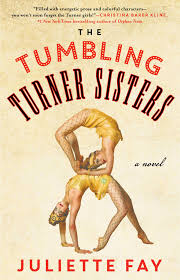Red Clay: A Novel
- By Charles B. Fancher
- Blackstone Publishing
- 336 pp.
- Reviewed by Marcie Geffner
- March 13, 2025
A formerly enslaved family navigates post-Civil War life.

Felix H. Parker, the protagonist of Charles B. Fancher’s debut novel, Red Clay, was born into slavery on a plantation known as Road’s End in Red Clay, Alabama. Felix’s mother, Elmira, was “the big-house cook,” and his father, Plessant, “the master’s valet.” The plantation owner, J.R. Parker, has a precocious daughter, Addie, who treats young Felix like a pet, feeding him scraps from the family’s breakfast table. It’s an inauspicious start to a relationship that will reverberate through both of their lives.
In 1864, 8-year-old Felix is taken for a ride with a terrible outcome: J.R. shoots himself with his own pistol. The horse returns to the plantation with the dead body and with Felix, who relates the story J.R. has sworn him to tell: that some white men approached the wagon, shot J.R., and rode away. The lie allows J.R.’s wife, Marie Louise, to save herself and their children from financial ruin in the final years of the Civil War.
But Addie is suspicious. Though Felix refuses to divulge what he knows, Marie Louise nonetheless sends him to work in the fields — a much more dangerous, difficult place than the house — to keep him away from her daughter and to preserve the secret on which the family’s future depends.
The plantation, complete with the family’s 50 slaves, is sold and then sold again. Felix and his parents suffer the horrors and miseries of their enslavement until the war ends. President Lincoln’s Emancipation Proclamation in 1862, followed by the Union’s victory and the ratification of three new amendments to the U.S. Constitution, freed millions of slaves and guaranteed their rights to citizenship and to vote, but Reconstruction created no prosperity for the liberated. Most had few resources, their opportunities were severely restricted by onerous state laws, and violence by the Ku Klux Klan was commonplace.
Released from bondage but with few options, Felix and his parents choose to remain at Road’s End, where Elmira becomes the Parkers’ paid cook, while Plessant works as a driver for J.R.’s son, Claude, who soon re-purchases the estate. Felix becomes a successful furniture maker, and later, a husband and father. Although the formal institution of slavery has ended, none of the family is ever truly safe in Red Clay, where color is destiny. “It was the way of things,” writes Fancher, “and change was nowhere in sight.”
Claude’s solution to his loss of social and financial status as a slaveowner is to appropriate for himself 10 acres of land J.R. had intended for Plessant and Elmira. “[As] the first job in your new role,” Claude says to Plessant, “I’ll need you to build a fence around that ten acres I showed you. With things the way they are, I want it to be clear that it’s my land. You understand?”
“Yassuh, first thing, and thank you,” Plessant replies. Smiling, Claude says, “You’re welcome, Plessant, you’re very welcome.”
While the novel is heartfelt, its flaws might frustrate some readers. The most troublesome is that the story opens with Felix’s funeral, after which Addie, now 80, arrives at his home, announces that her family once owned his, and proceeds to engage his daughter, Maybelle, and his granddaughter, Eileen, in a conversation about him. The funeral eliminates any suspense about Felix’s ultimate fate, and while the exchange neatly frames the main slavery-and-its-aftermath story, the intriguing meeting of Addie and Maybelle never moves forward in its own right. A bomb is dropped; no explosion follows.
Two other plotlines that are introduced but similarly never advance involve the sale of Felix’s two siblings, John and Bessie, and the killing of a minor character on the plantation. When the war ends, the siblings are never searched for, and neither returns to Road’s End to seek their parents. No one shows up to inquire about the murder victim, either.
The early deaths of several key characters leave the story with room to run but not much gas in the tank, necessitating the introduction of additional (and sketchily drawn) characters to fill out the later years of Felix’s life.
The character of Addie is problematic, as well. As an adult, she remains enough of a racist to disavow her own child when she discovers the father is mixed-race, yet she’s somehow sympathetic enough to win Felix’s easy forgiveness for her family’s enslavement of his and for her mistreatment of him when they were children. Their exchange of confidences feels forced, and her solution to the problem of the stolen 10 acres manages to both honor Plessant and insult Felix. In the end, she’s bitter — perhaps deservedly so — but still shows up to spend a day reminiscing with Felix’s family.
Quibbles aside, it is Felix’s life story that gives this novel a richness fans of historical fiction may savor.
Marcie Geffner is a writer, editor, and book reviewer in Ventura, California.

